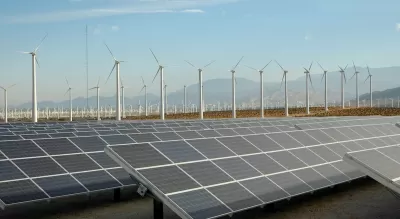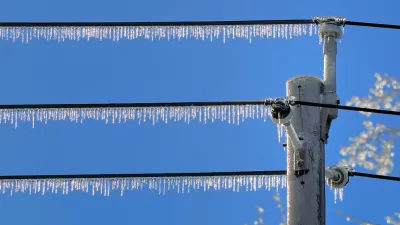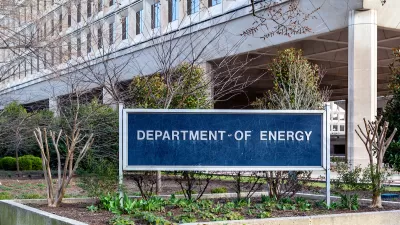The equivalent of 480 nuclear reactors’a worth of power generated from renewable sources is being produced but not captured in the U.S. and Europe — a number expected to grow as investment flows into the renewable energy industry.

Power grid infrastructure worldwide has not kept pace with the significant growth of renewable energy, according to an article from international media outlet Nikkei. The world increased renewable power capacity by an impressive 64 percent last year, reports Nikkei staff writer Misa Hama reports. But many of the projects lack grid access, meaning much of the energy produced — the equivalent of 480 nuclear reactors worth, to be precise — is going to waste.
It’s primarily wind and solar power that’s going to waste in the United States, where “the capacity of renewable facilities without grid access reached 1,500 GW on an output basis in 2023, a ninefold increase since 2015, according to the Lawrence Berkeley National Laboratory in California,” the article reads. A source interviewed for the piece attributes the sharp increase in part to the Inflation Reduction Act, which promotes renewable energy through tax incentives.
The lack of grid capacity could stall the transition away from fossil fuels and to renewable and clean energy. Fortunately, Hama reports, “Recognizing this risk, some governments are taking steps to address the issue. In early August, the U.S. announced an additional $2.2 billion investment to upgrade its power grids” and other governments worldwide are following suit.
FULL STORY: Renewable energy wasted worldwide due to lack of power grids

Study: Maui’s Plan to Convert Vacation Rentals to Long-Term Housing Could Cause Nearly $1 Billion Economic Loss
The plan would reduce visitor accommodation by 25,% resulting in 1,900 jobs lost.

North Texas Transit Leaders Tout Benefits of TOD for Growing Region
At a summit focused on transit-oriented development, policymakers discussed how North Texas’ expanded light rail system can serve as a tool for economic growth.

Using Old Oil and Gas Wells for Green Energy Storage
Penn State researchers have found that repurposing abandoned oil and gas wells for geothermal-assisted compressed-air energy storage can boost efficiency, reduce environmental risks, and support clean energy and job transitions.

Private Donations Propel Early Restoration of Palisades Playground
Los Angeles has secured over $1.3 million in private funding to restore the Pacific Palisades playground months ahead of schedule, creating a modern, accessible space that supports community healing after recent wildfires.

From Blight to Benefit: Early Results From California’s Equitable Cleanup Program
The Equitable Community Revitalization Grant (ECRG) program is reshaping brownfield redevelopment by prioritizing projects in low-income and environmental justice communities, emphasizing equity, transparency, and community benefits.

Planting Relief: Tackling Las Vegas Heat One Tree at a Time
Nevada Plants, a Las Vegas-based nonprofit, is combating the city’s extreme urban heat by giving away trees to residents in underserved neighborhoods, promoting shade, sustainability, and community health.
Urban Design for Planners 1: Software Tools
This six-course series explores essential urban design concepts using open source software and equips planners with the tools they need to participate fully in the urban design process.
Planning for Universal Design
Learn the tools for implementing Universal Design in planning regulations.
Ascent Environmental
Borough of Carlisle
Institute for Housing and Urban Development Studies (IHS)
City of Grandview
Harvard GSD Executive Education
Toledo-Lucas County Plan Commissions
Salt Lake City
NYU Wagner Graduate School of Public Service





























